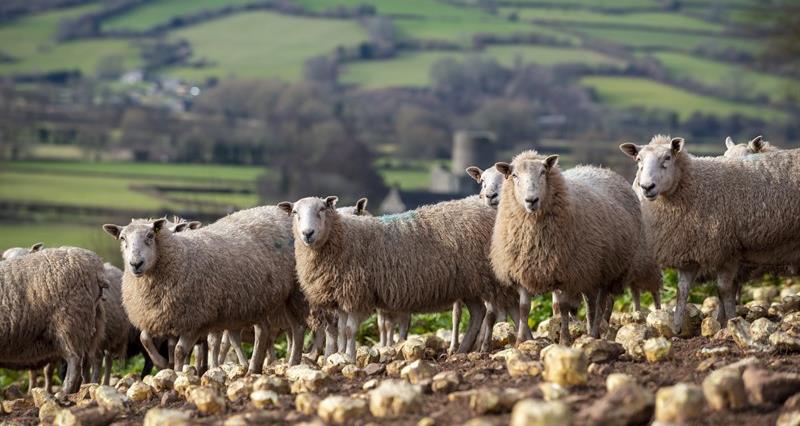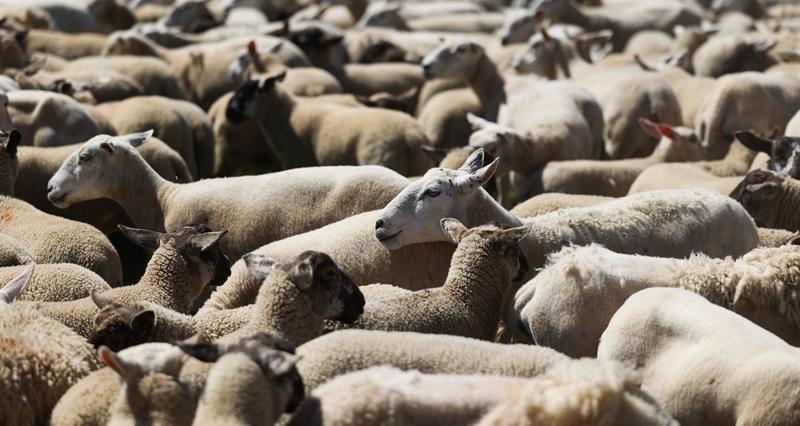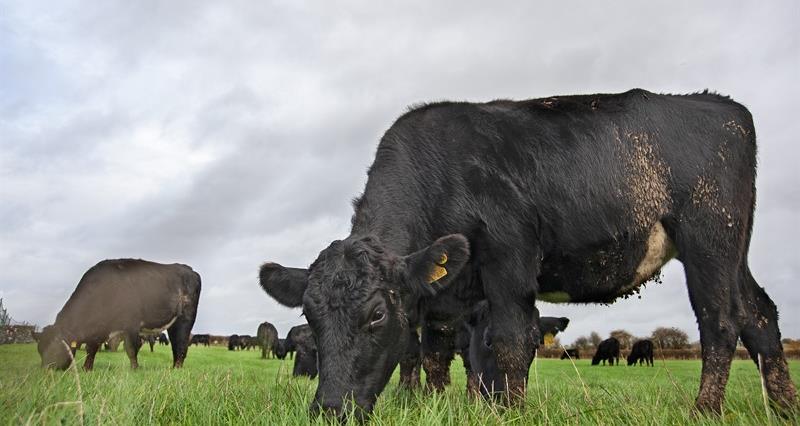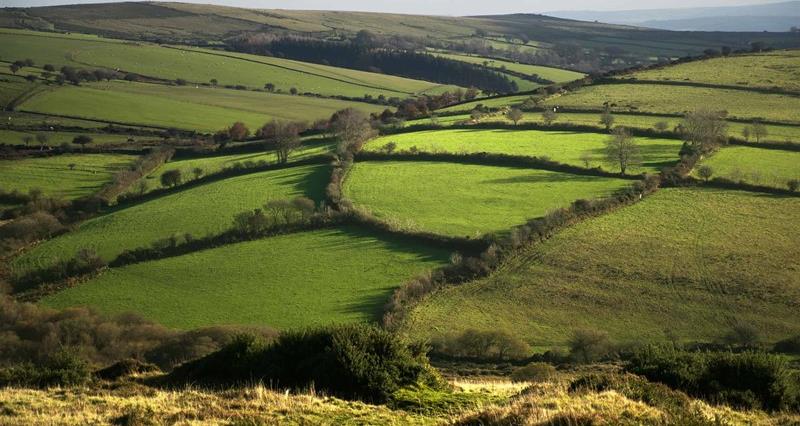The NFU is reminding members to ensure they have a vet attestation completed and signed by a vet if they are not farm assured.
VANs (Vet Attestation Numbers) are valid for 12 months and must be renewed to export to the EU. Without a VAN, you may limit the value and demand for your livestock at a market or abattoir in the near future, as many parts of a carcass are exported to the European market.
The derogation period allowing farmers to self declare they have had a vet visit came to an end on 12 April 2024.
Why do I need a vet attestation?
The purpose of a vet attestation is to comply with export requirements to verify the absence of notifiable disease and provide general advice on farm biosecurity.
The EHCs (Export Health Certificates) require that the animals' farm of origin has undergone regular visits by a veterinary surgeon.
Traders and processors exporting products of animal origin to the EU or Northern Ireland must follow the requirements set out in EU EHCs.
This is implemented by Article 8(e) of Delegated Regulation 2020/692:
“must receive regular animal health visits from a veterinarian for the purpose of the detection of, and information on, signs indicative of the occurrence of diseases, including those listed diseases referred to in Annex I relevant for the particular species and category of animal,”
It is recommended that all non-assured keepers of cattle, sheep, goats and pigs consigning animals for slaughter ensure they obtain a valid health attestation, as some parts of all animals slaughtered in the UK are exported to the EU.
A four-month derogation allowing farmers to self declare they have had a vet visit will come to an end on 12 April, after which point you must ensure you have a vet attestation completed and signed by your vet.
Vet visits
The approach of the annual vet visit is non-prescriptive: the fundamental role of the farm vet is to assess the biosecurity risk on the premises and give veterinary advice where necessary, i.e it is not necessary to inspect every animal or to take any samples. An example would be a vet attending a premises to complete a TB test.
Vet visit attestation is confirming the farm has regular vet visits and is under veterinary supervision.
Vets can expand the scope of any visit to assess and advise on biosecurity, even though it is not the primary purpose of the initial visit.
If there is suspicion or confirmation of a notifiable/reportable disease, or if other animal health and welfare issues are identified, these will be addressed through existing processes, and should not expect export certification. As long as the the visiting veterinarian can confirm that the farm is under regular veterinary supervision, a VAN can still be issued.
In England, if your farm has had an annual visit as part of the Defra Animal Health and Welfare Review Pathway scheme, then this visit will fulfil the requirements.
To meet the requirements of this attestation, the vet must:
- Assess animal health through an on-site inspection. Sampling and examination of individual animals is not required.
- Provide advice to the farmer, as seen fit by the vet, on any biosecurity concerns.
- Consider the associated diseases and risks of the species present on farm.
After all the above has been completed, the vet will produce a VAN (Vet Attestation Number).
The visit will not assess if animals are fit for slaughter or export. This will be done via existing controls, such as ante-mortem and post-mortem inspection at the slaughterhouse.
How often do I need a vet visit?
Obtaining a signed veterinary attestation must be done at least once over a 12-month period and can be combined with any other routine veterinary visit, including government supported initiatives such as the Animal Health and Welfare Pathway in England.
Vet attestations are valid for 12 months. It remains the farm business’ responsibility to ensure that a vet visit is taking place at least annually and the new VAN is added on the FCI (Food Chain Information) documentation.
If you’ve already had a vet visit in the last 12 months
It is understandable that vet visits will have occurred before 13 December 2023. If this is the case, the visiting vet can record the visit onto the sheep system (LIS England).
For other species, or when the vet cannot access the LIS sheep system, the vet can issue the Vet Attestation Number (VAN) retrospectively and the VAN can be added to the FCI documentation.
Vet attestation – what does it look like?
The veterinary attestation template should be completed and signed by your vet. During a farm visit or AH Pathway visit, the farmer’s vet will attest to the absence of notifiable disease, as well as any biosecurity risks.
In England, if your farm has had an annual visit as part of the Defra Animal Health and Welfare Review Pathway scheme, then this visit will fulfil the requirements. The vet will generate a receipt of the visit and a VAN (Vet Attestation Number).
The VAN will be made up of visiting vet’s RCVS number, CPH number and the date that the attestation is valid to (MM/YY). This number should be used on FCI information for non-assured consignments to slaughter markets and abattoirs.
It is the last holding of residence which requires a veterinary visit.
How a vet attestation is recorded
For all non-assured farms, they will need to ensure they have a veterinary declaration from their vet and write the VAN on FCI/movement documents accompanying animals to the abattoir, etc. The farmers must also keep a copy of this declaration for their own records.
The updated LIS-1 paper forms with a box for the VAN are available to view, download, and print from LI’s website.
There is a new digital capability on the existing Livestock Information Service for sheep which allows vets to mark a sheep keeper’s CPH as having had a valid vet attestation visit and will allow abattoirs to be able to view that attestation before export.
Once the veterinarian has completed the farm visit, they will be able to log in to LIS, using their RCVS credentials, and complete their veterinary attestation on the system, which will produce a veterinary attestation record and generate a VAN.
Veterinarians must print or save this record at the point of completion, to provide a copy to Livestock keepers. An abattoir user will then be able to login to LIS and choose to view, print, or save the veterinary attestation record for a specific animal(s) or view the attestation status of the departing agricultural holding.
Slaughterhouses
You don’t have to send paper copies of the vet attestation form with each animal or batch of animals which go to market or to a slaughterhouse.
It is the VAN which ‘travels’ with the animals to markets, slaughterhouses or collections centres including multiple consignments on the FCI/movement documents. However, you should retain the copy of the vet attestation form and make it available on request for random verification checks.
The VAN should be included in FCI documents for every lot of animals sent to slaughter. The slaughterhouses will verify the FCI and will retain the information and present it to the slaughterhouse OV (official veterinarian).
What happens if I don’t have a Vet Attestation Number?
If you do not currently have a VAN, you must arrange steps to receive one from your vet as soon as possible. If you do not obtain a VAN, you may limit the value and demand for your livestock at a market or abattoir in the near future.
Farmers and vets must keep a copy of this declaration for their records and provide a copy to their livestock auction market or meat processor if asked. Without evidence that your farm receives regular veterinary visits, the OV (official veterinarian) at the slaughterhouse may not be able to sign a Support Health Attestation (SHA) facilitating products derived from your animals to be exported to the EU.
It is recommended that all non-assured keepers of cattle, sheep, goats and pigs consigning animals for slaughter ensure they obtain a valid health attestation, as some parts of all animals slaughtered in the UK are exported to the EU.
Exports to the European Union will be stopped for livestock, livestock products and some 5th quarter products, from livestock farmers who do not provide a VAN or show that they are part of a qualifying farm assurance scheme.
You can request a backdated vet attestation and VAN from a farm visit that occurred in the last 12 months, or arrange a visit from your vet who can provide you with a Vet attestation and a VAN. The visit does not specifically to provide a VAN – see the guidance document under further information for more guidance.
What to do if you have multiple species on farm and numerous sites under the same CPH number
Establishments with more than one site under the same CPH number will need to have all sites assessed for the relevant species to enable the vet to issue the attestation for the whole CPH number.
Multiple species on one site can be subject to one veterinary attestation if the biosecurity issues for all species on that site are assessed during the vet visit.
A VAN can be issued if the visiting vet is confident that the premises is subject to regular veterinary visits, or are in routine control of the farm vet. However, ifthe last holding before movement to a slaughter market or abattoir is from a temporary CPH, the requirement has been met if the main CPH in the movement chain has had a vet visit and a VAN issued.
What to do if you do not know the final destination of the meat or productions from your animal
It is understandable that a farm owner may not be certain if the animals/derived animal products will be exported to the EU.
Even when meat from animals is not intended for export to the EU, there is a high likelihood that some of the animal products or by-products derived from them may be included in exports to the EU. Therefore, we strongly recommend that all farm businesses ensure a veterinary visit has taken place at their farm.
Batch animals
If batches of animals from different farms are grouped together at the market into a new larger batch to be sent for slaughter, the VAN from different batches will be collated by the market and be added to the new FCI documentation created at the market.
This documentation would travel with the animals, enabling the slaughterhouse operators to assess if the animals have moved from an establishment that received a veterinary visit.
Farmer attestations
Farmer declarations could only be used as a source of evidence for the certification of the ‘regular vet visit’ until 13 December 2023. This was a temporary measure put in place to maintain trade with the EU.
After this date, certification will be needed from either membership of a qualifying farm assurance scheme or via a valid veterinary declaration. If you do not obtain a VAN, your business will be impacted.
Assured farms do not need to do anything as assurance membership is known to the processor.
Fifth quarter products
Certificates for some fifth quarter products such as hides do not have the requirement for a veterinary visit and therefore a veterinary attestation is not needed for these products.
However, other products coming from the same animal(s) might still be exported to the EU therefore we recommend farmers ensure that a veterinary visit has taken place at their farm.
Further information
Defra has produced further Q&A guidance for farmers and vets which can be found here: Veterinary attestation for exports of Products of Animal Origin to the EU – Q&A guidance for industry and vets
You can read the latest updates on exports at: AHDB | Exports.
You can also read the letter from Defra to livestock producers from October 2023 about the new rules at: New requirement for farmers to provide evidence of annual vet visits



